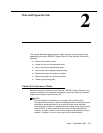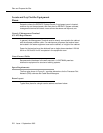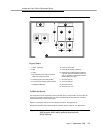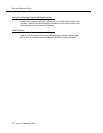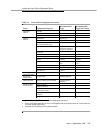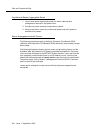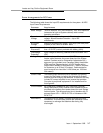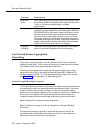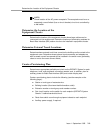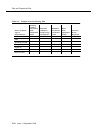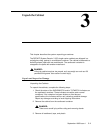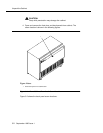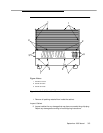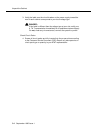
Locate and Lay Out the Equipment Room
Issue 1 September 1995
2-7
Power Arrangements for DC Power
The following table shows the input DC requirements for the system -48 VDC
Input Power Requirements
Parameter Requirements
Static Voltage -48 VDC nominal, -42.5 VDC minimum, -52.5 VDC maximum
(measured at input to System cabinet) under normal
operating conditions.
Dynamic
Voltage
Transient change in voltage— +/- 5% of steady state
voltage. Allowed transient duration—Up to 200
milliseconds.
AC Ripple
Voltage
Maximum wideband AC ripple— 450 mvpp (millivolts peak-
to-peak) in the 3 kHZ to 20 MHZ band.
Low Voltage
Disconnect
Automatic disconnect—Occurs when input voltage is less
than -42.5 VDC (control provided with battery plant).
Overvoltage
Protection
Input voltage at switching cabinets shall not exceed -52.5
VDC.
Voltage Drop Maximum drop—Must not exceed 0.5 VDC one way on
feeder cables between the power board and the System
cabinet. Feeders must be Underwriter Laboratories (UL)
approved (or equivalent) and Canadian Safety Association
(CSA) certified. Recommended -48 VDC feeder cable—
Royal Electric #X4905 or equivalent No. 1 AWG is required
for distances up to 50 feet (15 meters). Cable resistance
must be equal to or less than 0.1290 ohms per 1000 feet
304 meters).
Current Draw The battery plant rectifiers must be capable of providing
current for the System including that required for System
holdover and for charging the batteries. In addition, this may
include DC current required for an inverter that provides
Occupier to peripheral equipment if it is installed and for
future growth.
Circuit Breaker An Underwriter Laboratories (UL) listed and Canadian
Safety Association (CSA) certified circuit breaker must be
provided at the battery plant power board for each System
cabinet feeder. The recommended circuit breakers are 75
ampere Airpax UPL-1-1REC2-52-753 or Heinemann AM1-
B2-A-75-2.
Redundancy Redundancy of the battery chargers/rectifiers should be
considered. This would also provide the additional current
necessary to recharge the batteries after being fully
discharged.





